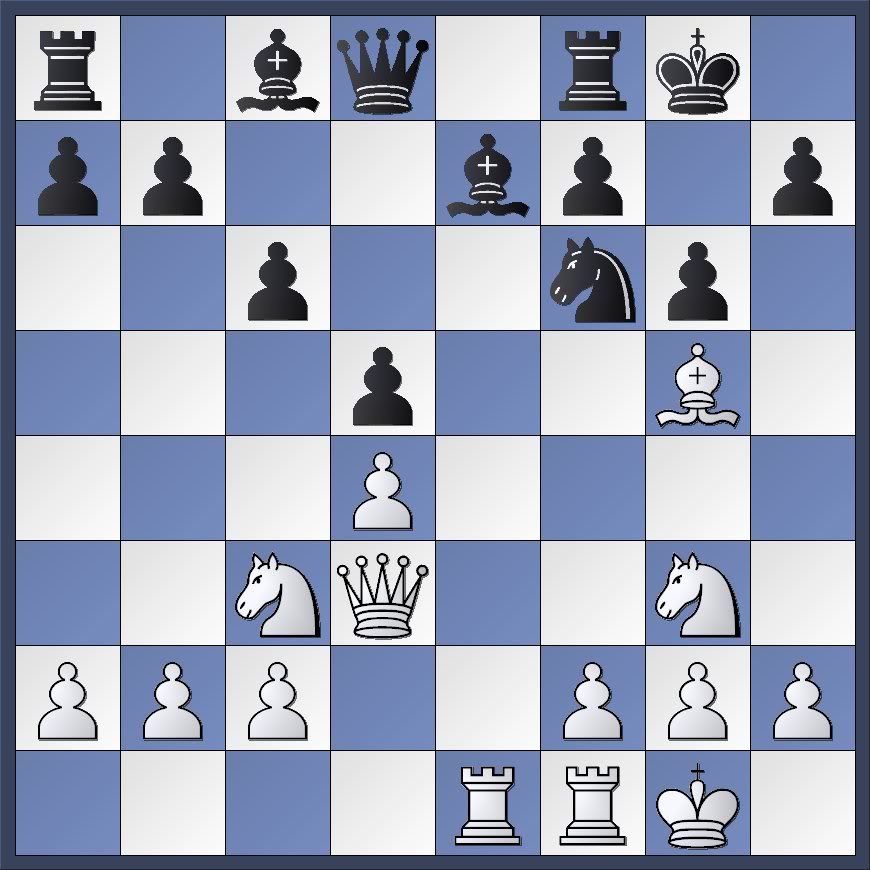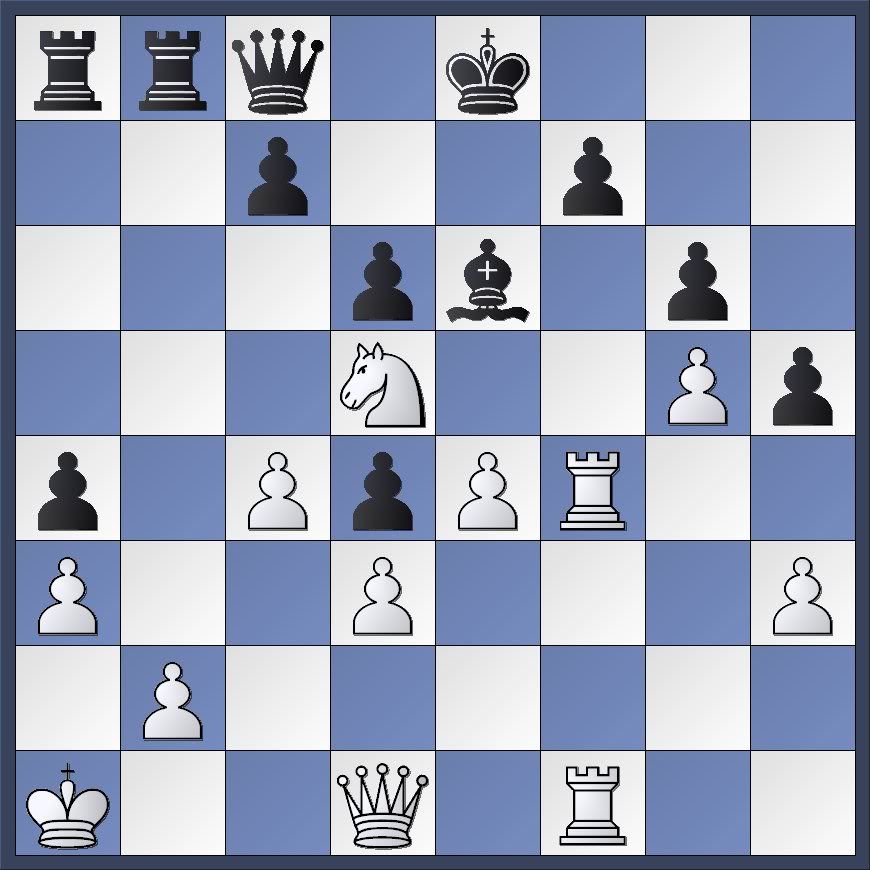Both problems called for a rook sacrifice that was easy to find.
WCSAC #62 Pinning: White to move

1.Rxe7 sets up a pin on the knight, and piling on the knight follows. 1...Qxe7 2.Qf3 Bg4 Reinfeld's line differs here 3.Qxg4 Nxg4 4.Bxe7 and White is winning.
A few moves later, I traded my bishop for Black's knight. Eventually a pair of rooks came off the board. My two knights appeared better than Black's rook until pawns started coming off the board.
Having failed on the first effort, I backed the game up a couple of times to a point where I could try a different plan, such as keeping my bishop. I lost these too. I spent about forty-five minutes struggling through this exercise.
Success!
WCSAC #145 White to move

1.Rxf7 Bxf7 2.Qf3 Be6 I expected 2...Bxd5 and wasn't certain if I would capture the bishop first or try 3.Qf8+ and 4.Qg7+. With the way Hiarcs 10 played, I was able to make moves I planned to examine more closely, but without the complications.
3.Qf8+ Ke7 4.Qg7+ Kc6 5.Ne7+ and Hiarcs 10 gave up on move 14, offering a bribe not to tell anyone.
The first problem gave me practice in imbalances of two minor pieces against a rook, but no success. In the second problem, I quickly had a queen and rook against two rooks and a bishop, and I had better pawns and a less vulnerable king. Success took ninety seconds off my clock, while the computer suffered through ten minutes of thinking time.














In the first example i would play:
ReplyDelete1.Rxe7 Qxe7 2.Qf3 Bg4 3. Bxf6 Bxf3 4. Bxe7
or
1. Rxe7 Qxe7 2. Qf3 Bg4 3. Bxf6 Qd7 4. Qf5
or
1. Rxe7 Qe7 2. Qf3 Kg7
In the first two lines white has the advantage of two pieces for the rook. In the last line black got only a bishop for a rook.
Your 3.Bxf6 seems slightly better than my 3.Qxg4.
ReplyDelete4.Qf5?? must be a typo. Qf4 wins easily if Black plays 3...Qd7??
2...Kg7 is the line given by Reinfeld. His line continues 3.Nce4 dxe4 4.Nxe4 Qe6 5.Bxf6+ Kg8 6.Qf4 Resigns
The position was taken from Spielmann-Wahle, Vienna 1926.
I couldn't comment on your blog for a few days since the comment as (below this box) was giving no name. Now it seems fixed.
ReplyDeleteYes, i ment Qf4 instead of Qf5.
I must say that i didn't saw the N on e4 thing which Reinfeld give as solution after 2. ...Kg7 .